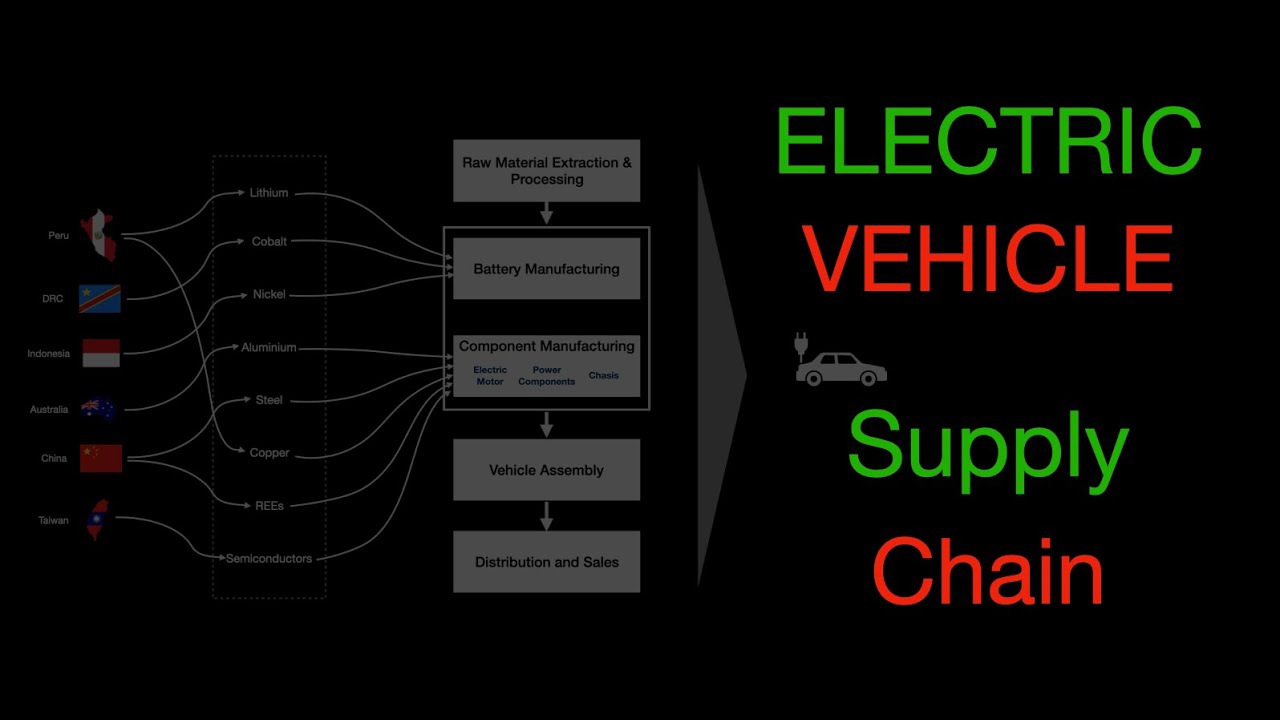Dysprosium's Growing Importance In Electric Vehicles: A Supply Chain Crisis?

Table of Contents
The Crucial Role of Dysprosium in Electric Vehicle Motors
Dysprosium's unique magnetic properties make it indispensable in the creation of high-performance permanent magnets, specifically neodymium magnets. These neodymium-dysprosium magnets are vital components of electric vehicle traction motors, enabling their high torque and efficiency. Without the addition of dysprosium, these magnets would significantly lose their strength and effectiveness at higher temperatures, a critical factor for the optimal functioning of EV motors.
- Enhanced motor performance: Dysprosium's inclusion leads to a higher power density and efficiency compared to magnets made without it. This translates to better performance and longer lifespan.
- Smaller motor size: The improved magnetic properties allow for the use of smaller, lighter motors, contributing to reduced vehicle weight and improved fuel economy, particularly beneficial in hybrid electric vehicles (HEVs).
- Extended range: More efficient motors translate to longer driving distances on a single charge for battery electric vehicles (BEVs), a key selling point for consumers. The improved energy efficiency directly impacts the range and overall usability of the EV.
The Current State of Dysprosium Supply and Demand
The current state of dysprosium supply and demand presents a significant challenge to the future of the EV industry. The primary concern is the limited geographical sources of this crucial rare earth element.
-
Limited geographical sources: China currently dominates dysprosium production, holding a significant share of global reserves and processing capacity. This creates a geopolitical vulnerability, making the supply chain susceptible to disruptions caused by international relations or policy changes.
-
Growing demand: The exponential growth of the EV market is dramatically outpacing the current dysprosium supply. This surging demand is pushing prices upward, creating instability and uncertainty for EV manufacturers.
-
Recycling challenges: The current recycling infrastructure for dysprosium from end-of-life EVs is woefully inadequate to meet the future demand. Efficient and cost-effective recycling processes are crucial to closing the loop and reducing reliance on primary mining.
-
Price volatility: Fluctuations in dysprosium prices significantly impact the cost of EV manufacturing, making it challenging for manufacturers to accurately predict and manage production costs.
-
Geopolitical risks: Over-reliance on a single major supplier like China poses significant geopolitical risks, leaving the EV industry vulnerable to supply chain disruptions caused by political tensions or trade disputes.
-
Environmental concerns: Mining and processing dysprosium, like other rare earth elements, have environmental consequences. Minimizing the environmental impact of dysprosium extraction and processing is crucial for sustainable EV development.
The Impact of Dysprosium Shortages on the EV Industry
Dysprosium shortages pose a serious threat to the growth and sustainability of the EV industry. The consequences can be far-reaching.
-
Increased EV production costs: Higher dysprosium prices directly translate into more expensive EVs, potentially hindering market adoption and slowing the transition to electric mobility.
-
Potential production slowdowns: A shortage of dysprosium could lead to production delays and limitations in EV manufacturing, impacting the ability of manufacturers to meet the growing demand.
-
Reduced profitability for EV manufacturers: Increased material costs and potential production bottlenecks directly impact the profitability of EV manufacturers.
-
Slower transition to electric mobility: Dysprosium shortages could significantly slow down the global transition to electric vehicles, hindering efforts to combat climate change.
-
Impact on government climate targets: Many governments have set ambitious targets for electric vehicle adoption as part of their climate change strategies. Dysprosium shortages could make it difficult to achieve these goals.
Strategies to Mitigate the Dysprosium Supply Chain Crisis
Addressing the looming dysprosium shortage requires a concerted and multi-faceted approach.
-
Diversification of supply sources: Investing in dysprosium mining and processing outside of China is crucial to reduce reliance on a single supplier and enhance supply chain resilience. This includes exploring and developing dysprosium resources in other countries.
-
Technological advancements: Research and development into dysprosium-free magnet technologies or methods to significantly improve recycling efficiency are essential for long-term sustainability. This may involve exploring alternative magnet materials or developing innovative recycling techniques.
-
Improved recycling infrastructure: Developing robust and efficient processes to recover dysprosium from discarded EVs and other electronic waste is paramount. This requires investment in advanced recycling technologies and infrastructure.
-
Government policies and incentives: Governments can play a vital role by implementing supportive policies and incentives to encourage investment in dysprosium mining, processing, and recycling.
-
International collaborations: International collaboration is essential to secure stable dysprosium supplies and ensure the responsible sourcing and management of this critical resource.
-
Increased investment in research and development: Continued investment in research and development of alternative materials and technologies is crucial to reducing reliance on dysprosium and mitigating future supply chain risks.
Conclusion
Dysprosium's critical role in the electric vehicle revolution cannot be overstated. The current dependence on limited sources and the rapid growth of the EV market create a significant supply chain challenge. Addressing this crisis requires a multi-pronged approach involving supply diversification, technological innovation, and enhanced recycling infrastructure. Ignoring the looming dysprosium shortage risks hindering the transition to sustainable transportation. Taking proactive steps to secure a stable supply of dysprosium is essential for the future of electric vehicles and the global shift towards cleaner energy. Learn more about the future of dysprosium and its impact on electric vehicles today!

Featured Posts
-
 Convicted Cardinal Seeks Role In Next Papal Election
Apr 29, 2025
Convicted Cardinal Seeks Role In Next Papal Election
Apr 29, 2025 -
 Jeff Goldblums Wife Emilie Livingston Age Kids And Their Life Together
Apr 29, 2025
Jeff Goldblums Wife Emilie Livingston Age Kids And Their Life Together
Apr 29, 2025 -
 Minnesota Faces Attorney General Pressure Over Trumps Transgender Sports Ban
Apr 29, 2025
Minnesota Faces Attorney General Pressure Over Trumps Transgender Sports Ban
Apr 29, 2025 -
 Pw C Withdraws From Nine African Countries Impact On Senegal Gabon And Madagascar
Apr 29, 2025
Pw C Withdraws From Nine African Countries Impact On Senegal Gabon And Madagascar
Apr 29, 2025 -
 Proposed Starbucks Raise Rejected By Union
Apr 29, 2025
Proposed Starbucks Raise Rejected By Union
Apr 29, 2025
